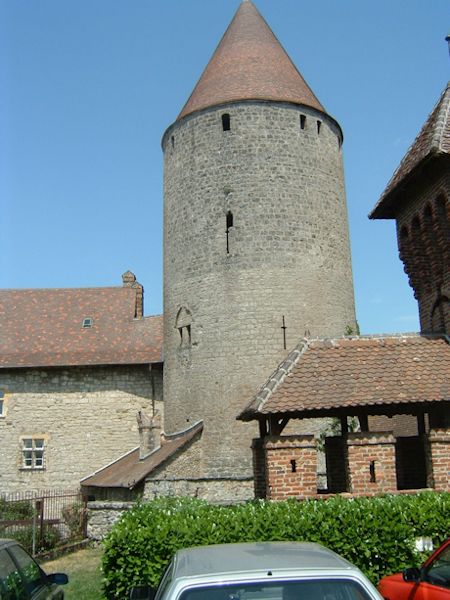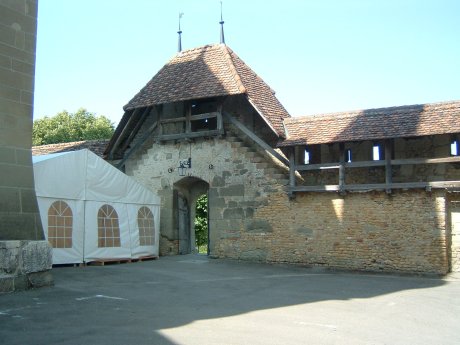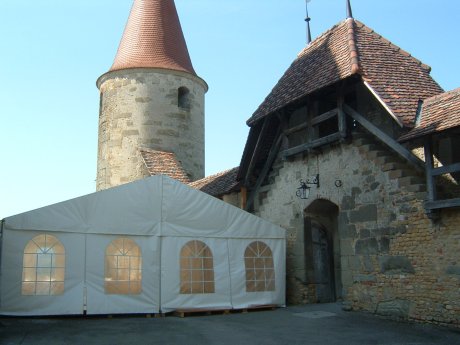|
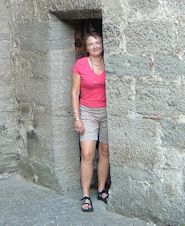 Dwight Peck's personal website Dwight Peck's personal website
Kristin's visit in summer
2003: Estavayer-le-Lac, Avenches,
Payerne
You
may not find this terribly rewarding unless you're included here, so this is a
good time for casual and random browsers to turn back before they get too caught
up in the sweep and majesty of the proceedings and can't let go.
Estavayer-le-Lac
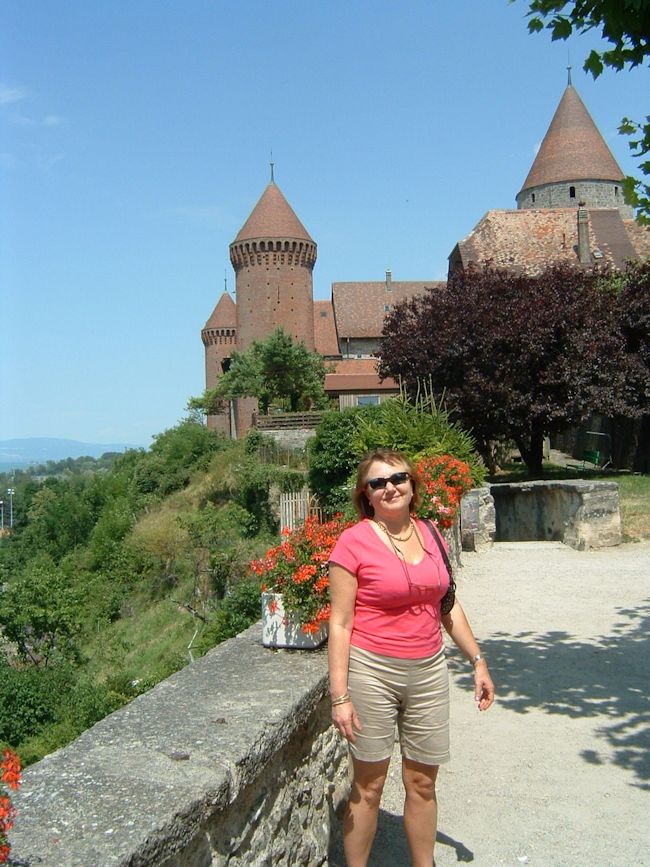
We're starting Kristin's sojourn off, 24 June 2003, with a visit to Estavayer-le-Lac on the southern shore of the lake of Neuchâtel, in the canton of Fribourg.
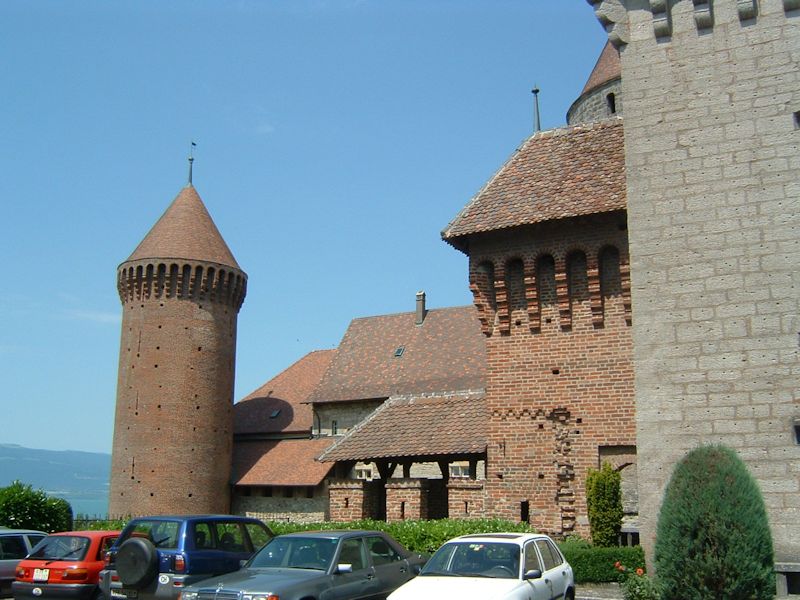
The
castle at Estavayer-le-Lac, called the Chenaux Castle, is strategically situated between two Ramsar Wetlands of International
Importance of the "Grand Cariçaie", the Rive sud du lac de Neuchâtel and the Baie du Fanel et Le
Chablais.
Estavayer was a prehistoric lake settlement and subsequently a Roman colony, but the château dates from the Savoie period in the 12th century.
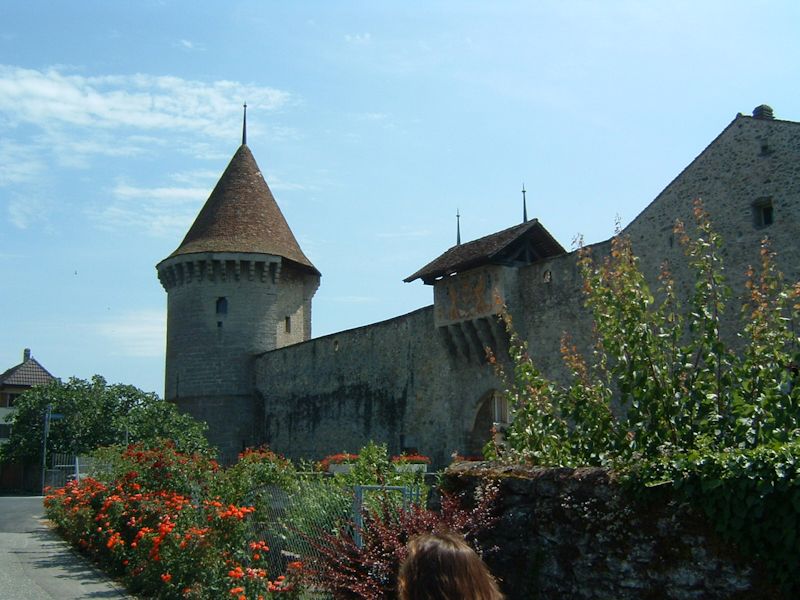

Gardens
within the castle

Kristin
within the castle
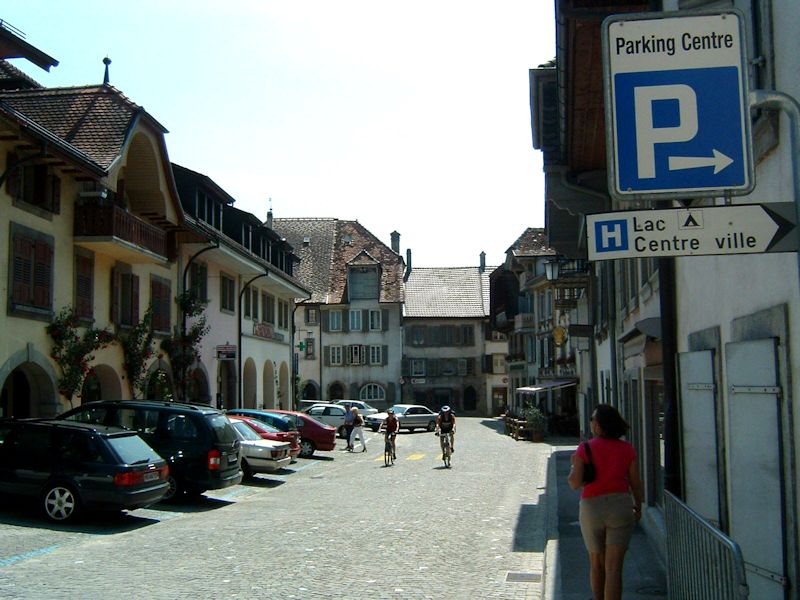
Bicyclists
and Kristin touring the village
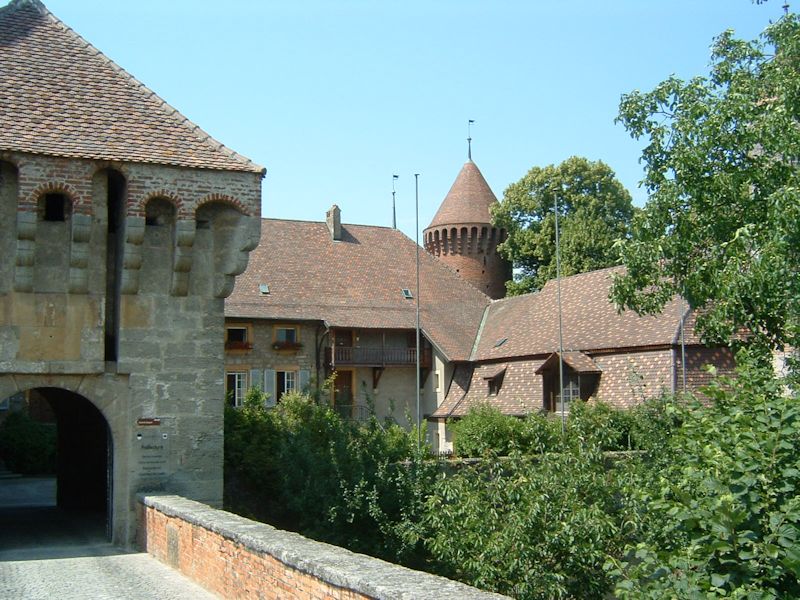
Estavayer has many attractions -- besides the castle, the Gothic church, the reconstructed neolithic lakeside village, and the Roman museum, it's probably best known for its Frog Museum.
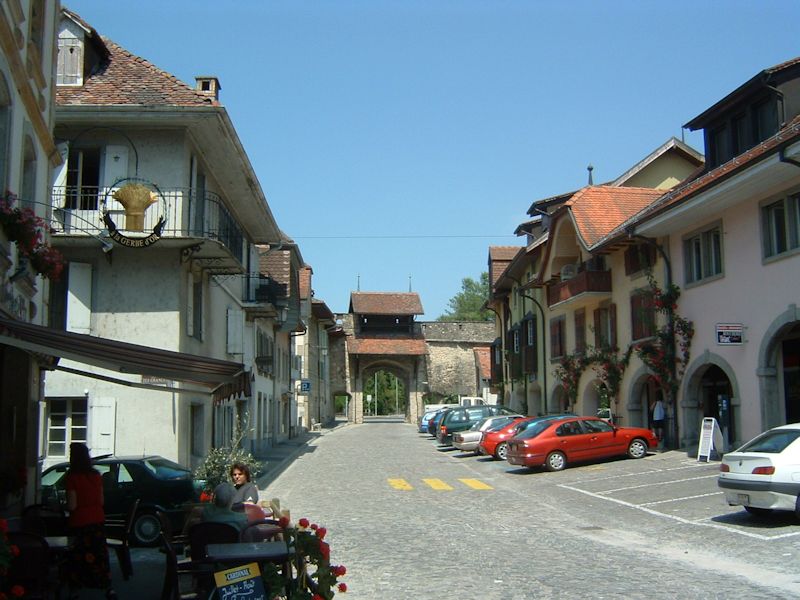
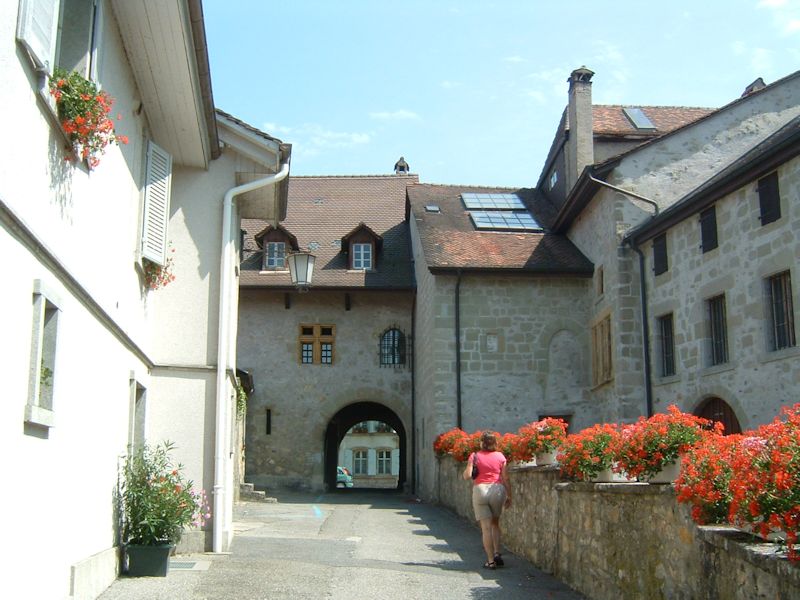
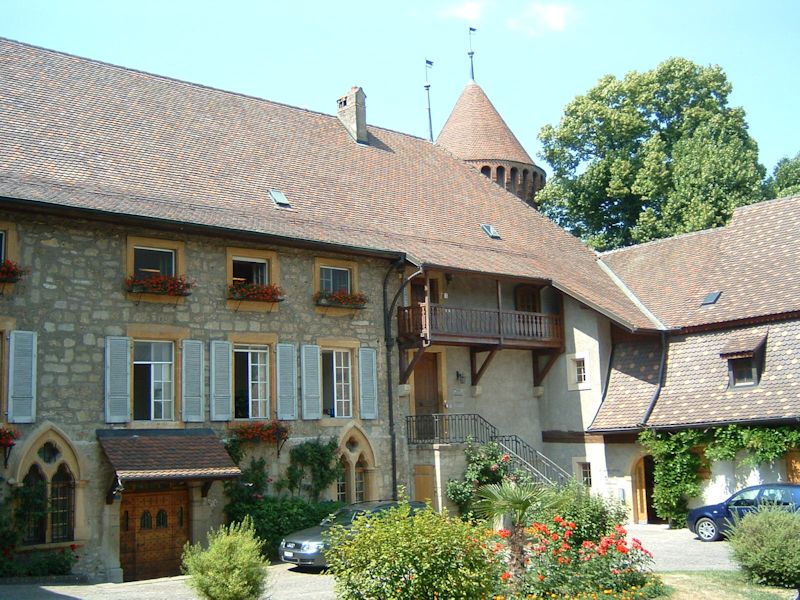
Street scenes
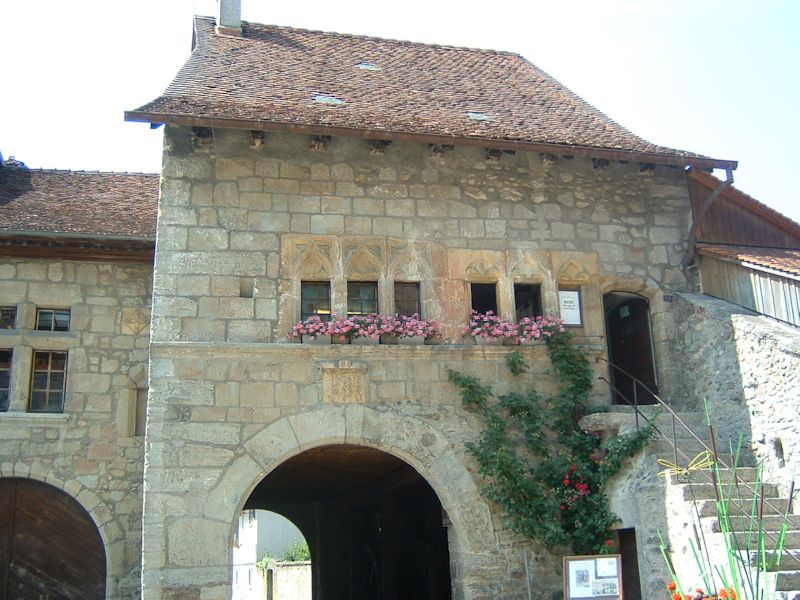
More
views of Estavayer (inside the police administration, in fact) and its nifty old
walls and gates.
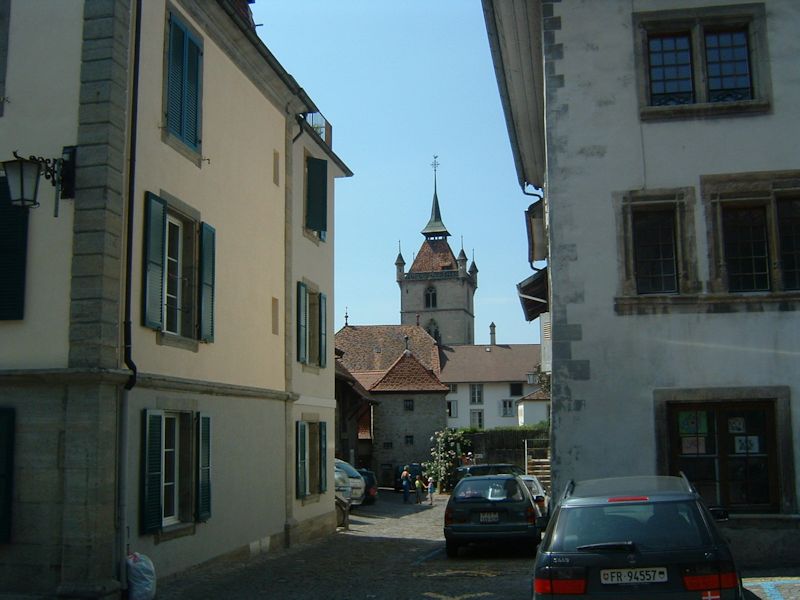
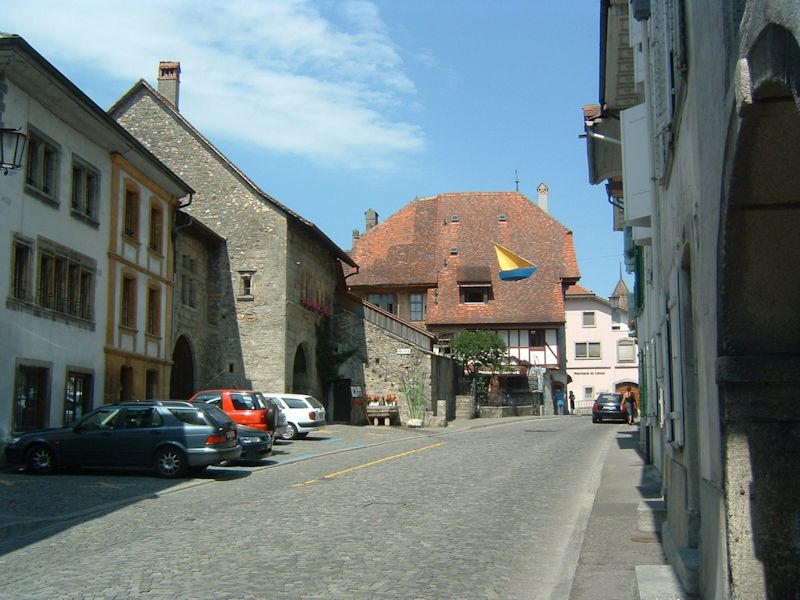
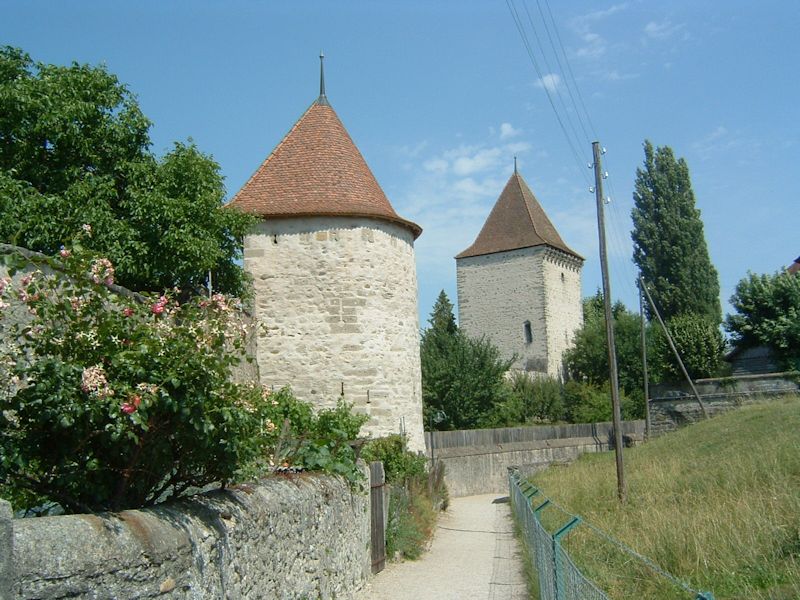
The medieval town walls
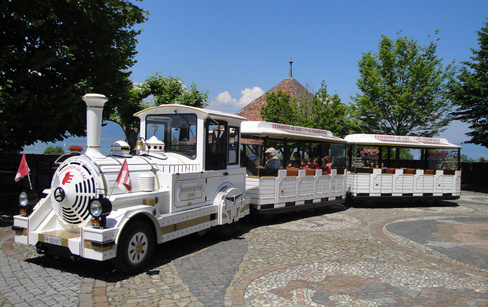
And of course, Estavayer's got its own P'tit Train as well, the Dotto Muson River 1894 model (photos from http://www.estavayer-payerne.ch/en/culture-heritage/Musees-et-autres-visites/tiny-train-of-estavayer.html) Say
goodbye to Estavayer-le-lac -- we travel on now to Avenches across the flat land
of the Broye.
Avenches (Aventicum)
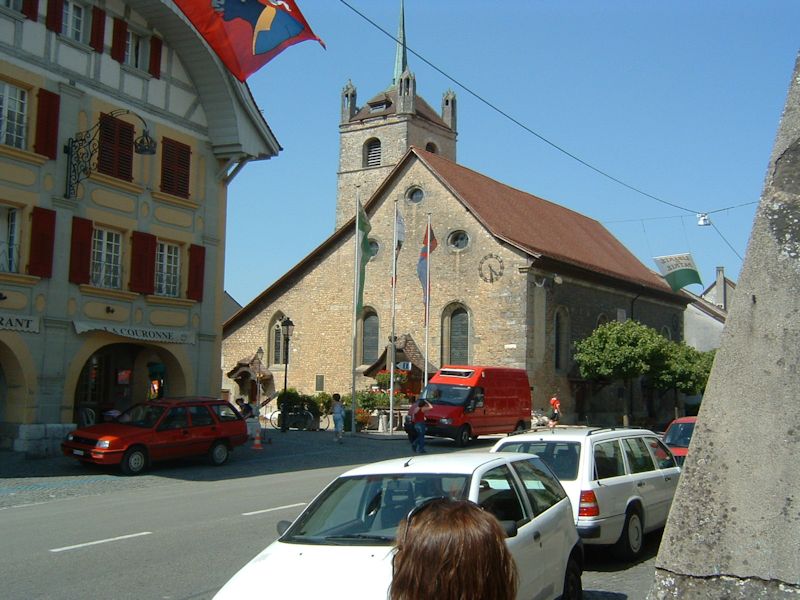
Beautiful
downtown Avenches, the medieval town built up all round the Roman military outpost
of Aventicum
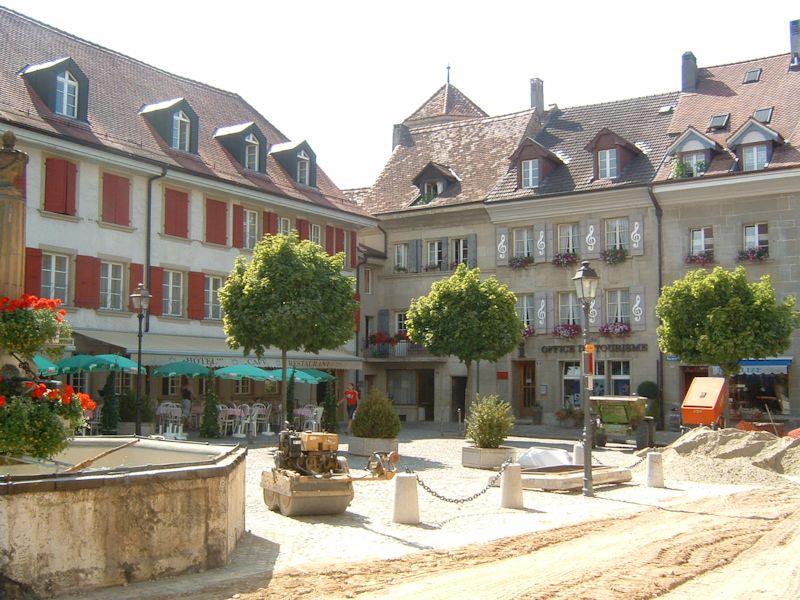
The site was originally a Helvetian Celtic settlement and takes its name from an Helvetian goddess. It flourished as a market town and provincial capital under the Romans but was sacked by Alamanni barbarian confederation with the loosening of Roman military control in the area in the late 3rd century.

Here's the Roman
amphitheatre of Aventicum, getting dressed up for some flashy new modern production.
Aventicum was a very interesting Roman outpost, dating from ca. 15 BCbecause (insofar as I understand
it, with my shaky sense of history) Roman legionnaires who'd been posted at Nyon
and other transmontane military garrisons and had reached retirement age were
given land in the region around the Lac de Morat (or Murten in German) and allowed
to organize themselves into their own unofficial Department of Homeland Security.
Win/Win!!!
For the Empire, a free garrison outpost, and for the retirees, an organized way
of living out their days in a kind of
militarized comfort.
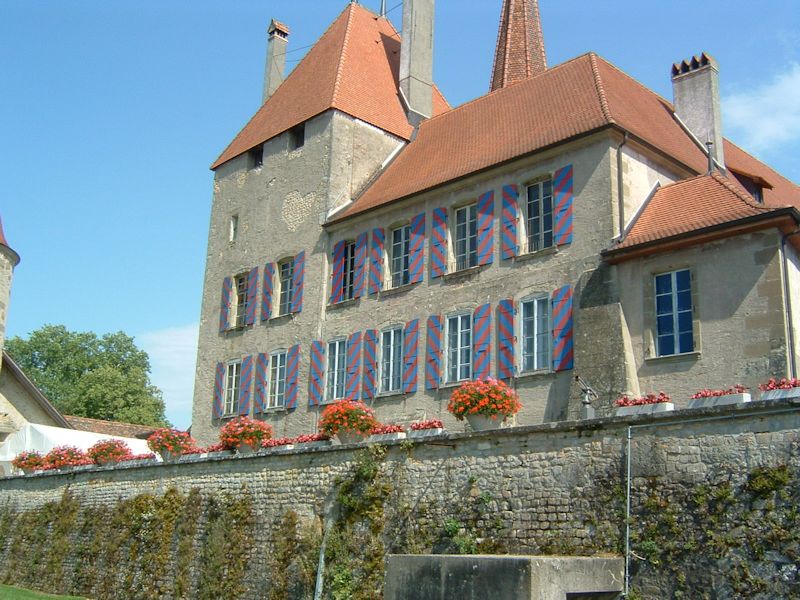
The
town castle at Avenches. (Love the color combos!)
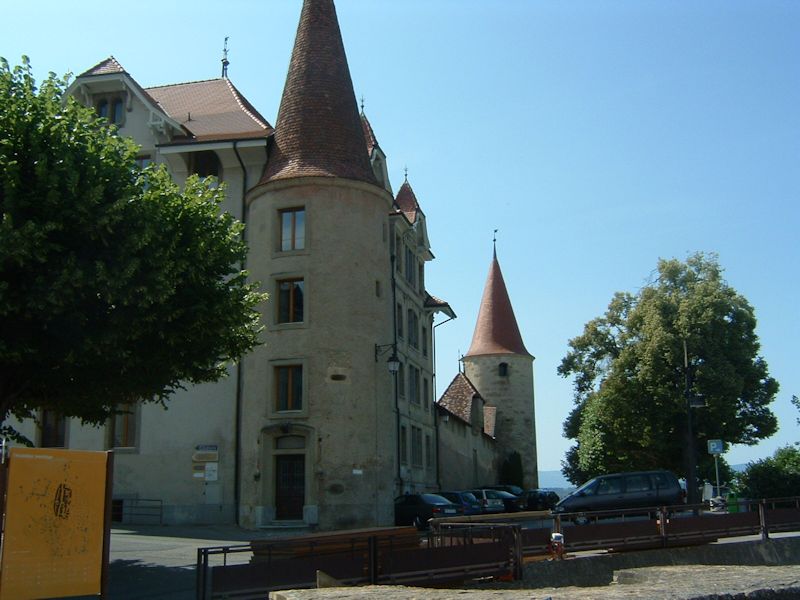
A new walled village was constructed on the site in the 5th century, and a new city was founded in 1074 by the Bishop of Lausanne.
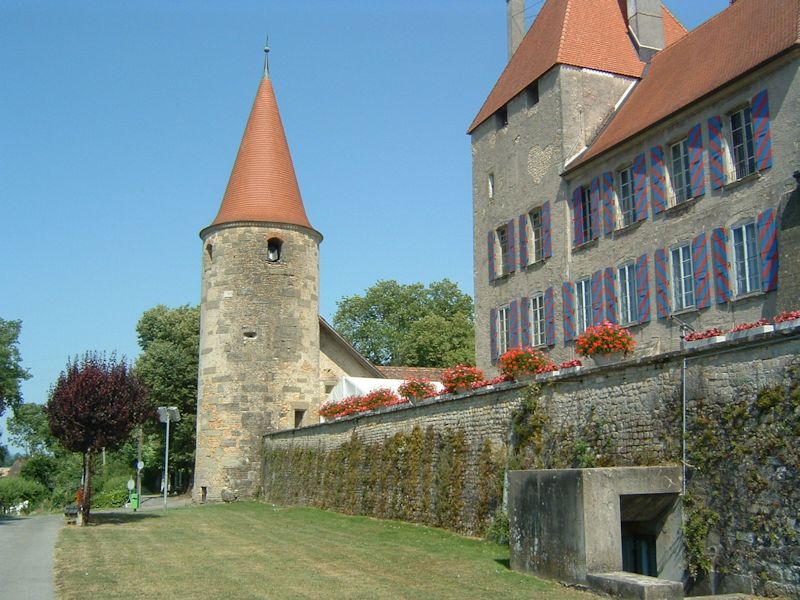
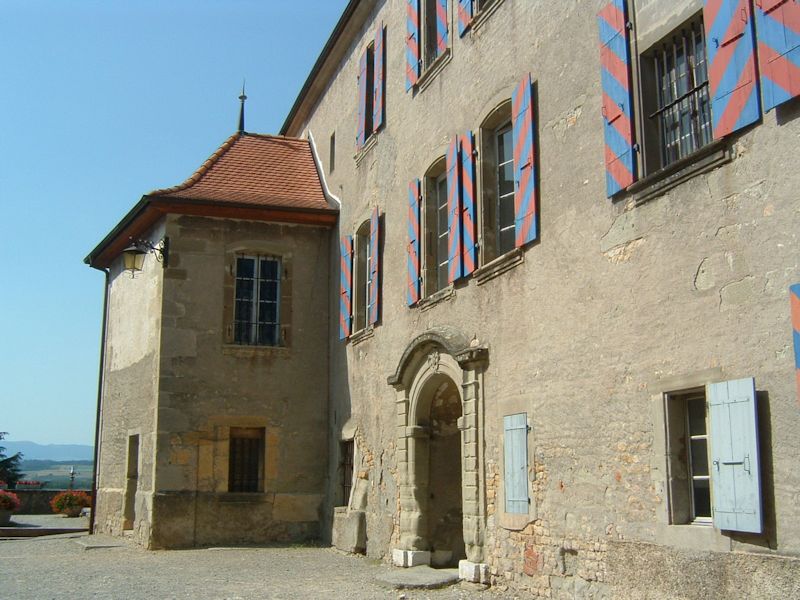

More
views of Avenches

More
views of Kristin (coaxing a cat)
Payerne
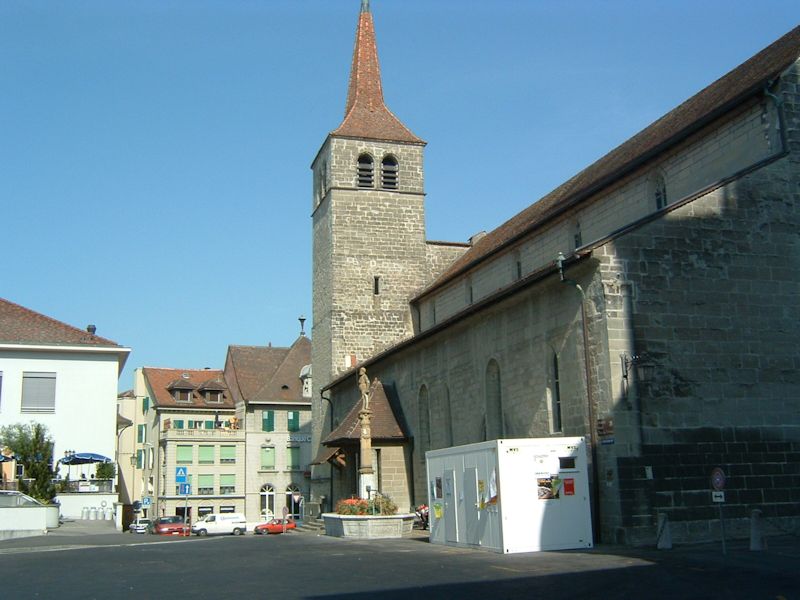
Payerne is just nearby, in the canton of Vaud but near the borders with Fribourg. There are evidences of Neolithic and later settlements roundabout, including Roman buildings and infrastructure, but the village itself is attested from AD 587.
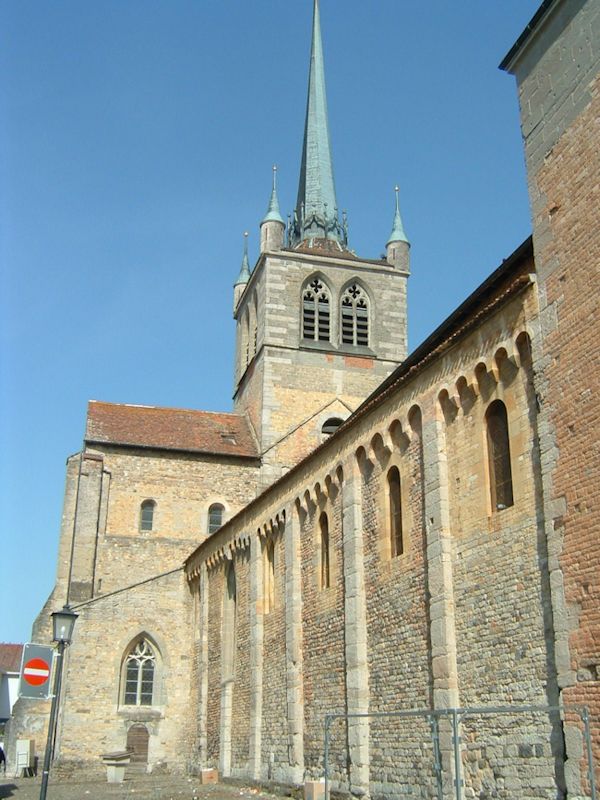
The Cluniac priory was founded in the 9th century, however, and must have been enormously popular with the pious donors, because it seems soon to have become the Home Office for an array of Cluniac facilities throughout the area, including the monastic church in my village of Bassins down by Lake Geneva.
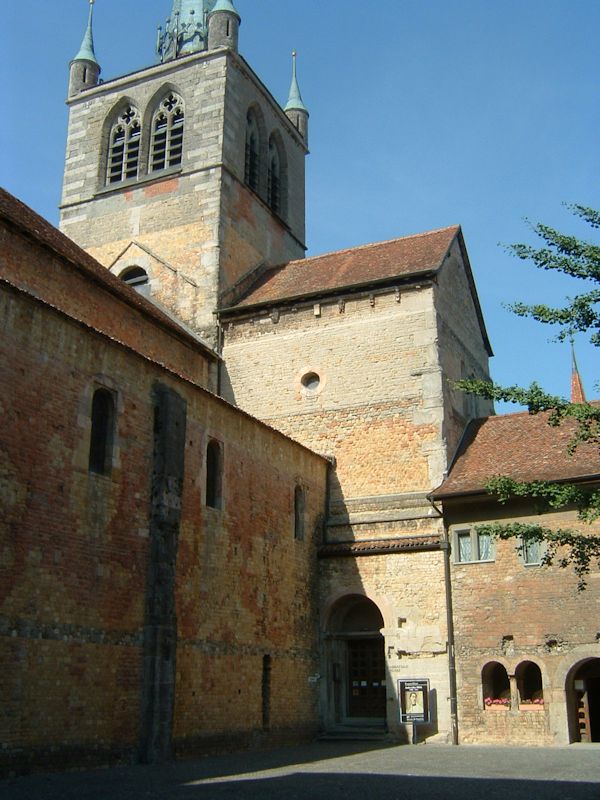
The abbey church of the Payerne priory


 Feedback
and suggestions are welcome if positive, resented if negative, Feedback
and suggestions are welcome if positive, resented if negative,
 . All
rights reserved, all wrongs avenged. Posted 8 November 2003, revised 8 March 2008, 12 December 2013. . All
rights reserved, all wrongs avenged. Posted 8 November 2003, revised 8 March 2008, 12 December 2013.
|
 Dwight Peck's personal website
Dwight Peck's personal website

